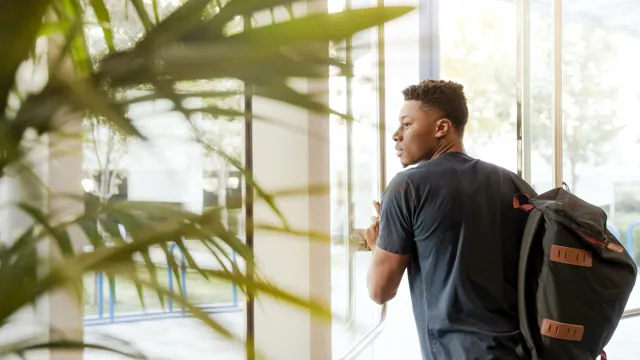February is Black History Month, and the story of the over 100 Historically Black Colleges and Universities (HBCUs) is an integral chapter in American higher education.
Famous graduates of HBCUs include:
- Kamala Harris (Howard University)
- Martin Luther King, Jr. (Morehouse College)
- Thurgood Marshall (Howard University)
- Oprah Winfrey (Tennessee State University)
- Samuel L. Jackson (Morehouse College)
- Booker T. Washington (Hampton University)
The HBCU Designation
The term “Historically Black College and University” became an official designation of the U.S. Higher Education Act of 1965, which expanded federal funding for these institutions.
Today, over 80% of HBCU students are Black, though the actual demographics vary by student body. While Spelman College in Atlanta enrolls over 97% Black students, HBCU Bluefield University in Virginia counts less than 10% Black students today.
HBCUS only represent 3% of colleges eligible for federal financial aid, yet they confer 17% of all bachelor’s degrees earned by Black students. An impressive 25% of all Black students with STEM degrees come from HBCUs. With an enrollment of over 300,00 students, these schools remain an important cornerstone of higher education in the U.S.
For a profile of some top HBCUs, check out our article on Best HBCUs and Why You Should Apply.
The Birth of Black Colleges and Universities
Harvard, America’s first university, was founded in 1636. But it was not for another 163 years before the first Black American, John Chavis, enrolled in college at Washington & Lee University in 1799.
After the Civil War ended in 1865, over 100 colleges and universities were founded to offer both vocational skills and liberal arts programs to Black students who had been historically prevented from attending college in the Southern States.
The federal government strengthened the HBCU movement in 1890, requiring that Southern states extend land grants for colleges to serve Black students if other schools were not available.
1865-1915: Competing Visions for Black Higher Education
One of the early debates about HBCUs was whether they could better serve newly-admitted Black students with vocational training, or a liberal arts education.
The “vocational” school of thought was led by Booker T. Washington, who founded Tuskegee University in Alabama in 1881 to provide agricultural and industrial education. Washington argued that Black Americans would be best served to focus on hard work and material prosperity in the short term – in other words, to use HBCUs to find good jobs in a new free economy. He argued that this economic betterment would lead to parity and better acceptance in American society in the longer term.
The “liberal arts” position was championed by W.E.B. DuBois, a Harvard University graduate who argued that vocational education would perpetuate the class distinctions between Black and white Americans. DuBois posited the notion that a generation of the brightest Black thought leaders – what he called the “Talented Tenth” – could help lead Blacks beyond discrimination.
By either measure, the HBCUs have been a vast success.
Booker T. Washington’s vision has become a reality as HBCUs have been credited with creating a Black middle class in the U.S. (both by allowing Blacks admission to college in former Confederate states, but also by providing an alternative to the race quotas at Northern schools.)
At the same time, W.E.B. DuBois’ position has also proved prescient, as many of the most influential Black leaders in American history (including Vice President Kamala Harris) have been graduates of HBCUs.
WWII: HBCUs Distinguish Themselves
One famous piece of HBCU lore is the story of the Tuskegee airmen (the inspiration for the 2012 movie Red Tails.) This much-decorated group of Black pilots, who distinguished themselves in WWII combat and pioneered a role for Blacks in the military, were trained at HBCU Tuskegee University. The valor of these pilots – who risked their lives defending a country that had historically-oppressed them – speaks for itself.
HBCUs also played an important role in the WWII era by hiring Jewish scholars who were fleeing Nazi Europe. Other American universities refused to hire these refugees, but the HBCUs welcomed them as new faculty. This policy is one of many ways that HBCUs have distinguished themselves as a champion for any group or person who faces discrimination in the U.S.
2020: Renewed Investment in HBCUs
Over the last few decades, some commentators have suggested that the best and brightest Black students have been increasingly enrolling in non-HBCUs. In response, the HBCUs point to the intense competition for the top candidates, arguing that it is difficult for HBCUs to match the scholarship packages of universities with huge endowments.
2020 saw some important gifts to HBCUs that will help with them recruit students. These include:
- The 3% owner of Amazon, MacKenzie Scott, gifted $500 million to HBCUs
- Michael R. Bloomberg donated $100 million to four HBCU medical schools
- The co-founder of Netflix gave $40 million each to Spelman and Morehouse Colleges
- IBM invested $100 million in HBCUs through the IBM Skills Academic Academy Initiative. IBM also announced a multi-year investment in 13 HBCUs focused on physics, engineering, math, computer science, and other STEM fields.
- Black billionaire philanthropist Robert F. Smith, pon receiving an honorary degree from Morehouse College, committed to paying off the debt of every graduating student (estimated at $40 million)
NSHSS’ Commitment to Social Justice
The National Society of High School Scholars (NSHSS) offers several scholarships for students with a proven commitment to social change and advocacy.
